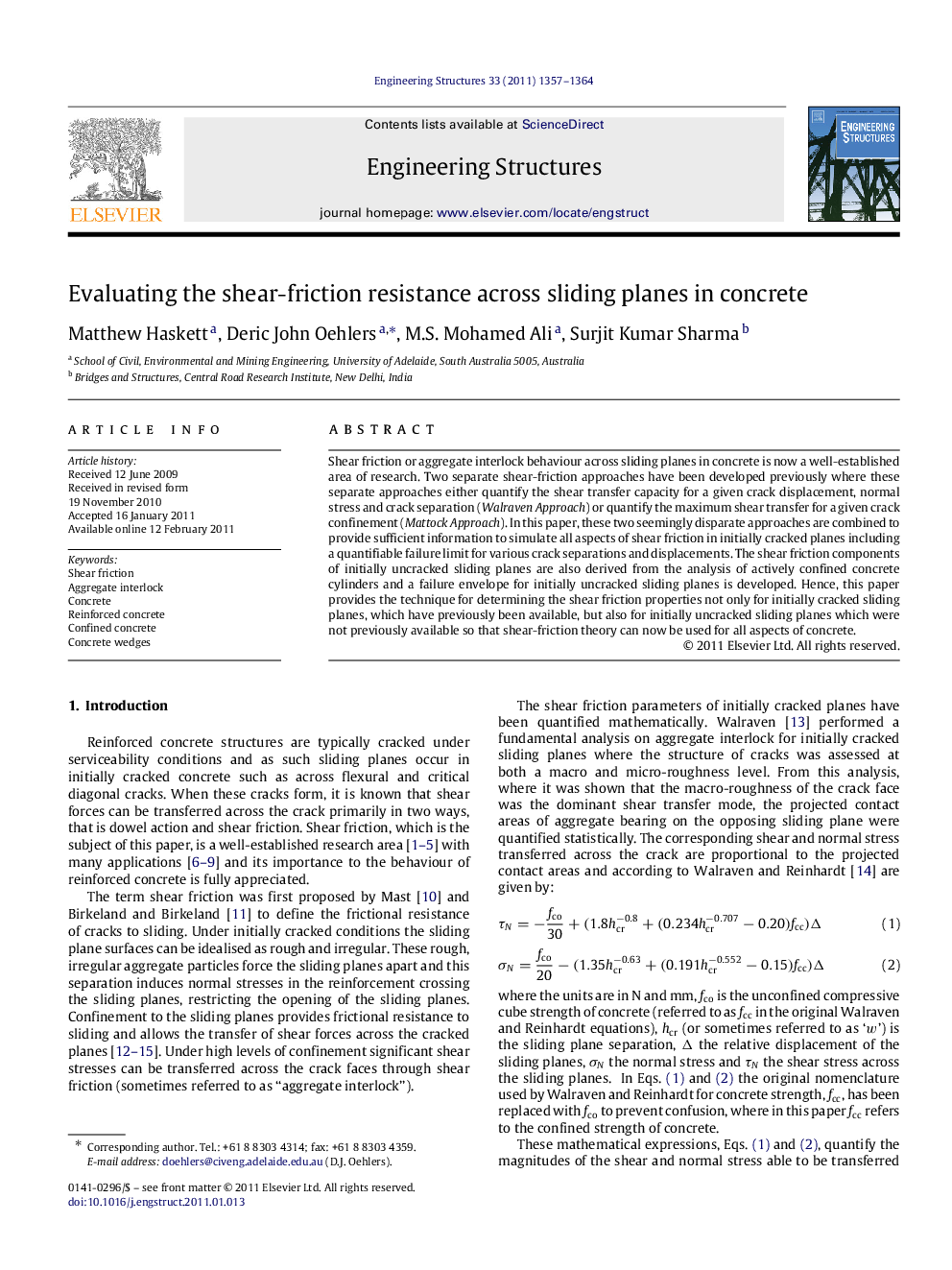| Article ID | Journal | Published Year | Pages | File Type |
|---|---|---|---|---|
| 10286817 | Engineering Structures | 2011 | 8 Pages |
Abstract
Shear friction or aggregate interlock behaviour across sliding planes in concrete is now a well-established area of research. Two separate shear-friction approaches have been developed previously where these separate approaches either quantify the shear transfer capacity for a given crack displacement, normal stress and crack separation (Walraven Approach) or quantify the maximum shear transfer for a given crack confinement (Mattock Approach). In this paper, these two seemingly disparate approaches are combined to provide sufficient information to simulate all aspects of shear friction in initially cracked planes including a quantifiable failure limit for various crack separations and displacements. The shear friction components of initially uncracked sliding planes are also derived from the analysis of actively confined concrete cylinders and a failure envelope for initially uncracked sliding planes is developed. Hence, this paper provides the technique for determining the shear friction properties not only for initially cracked sliding planes, which have previously been available, but also for initially uncracked sliding planes which were not previously available so that shear-friction theory can now be used for all aspects of concrete.
Related Topics
Physical Sciences and Engineering
Earth and Planetary Sciences
Geotechnical Engineering and Engineering Geology
Authors
Matthew Haskett, Deric John Oehlers, M.S. Mohamed Ali, Surjit Kumar Sharma,
